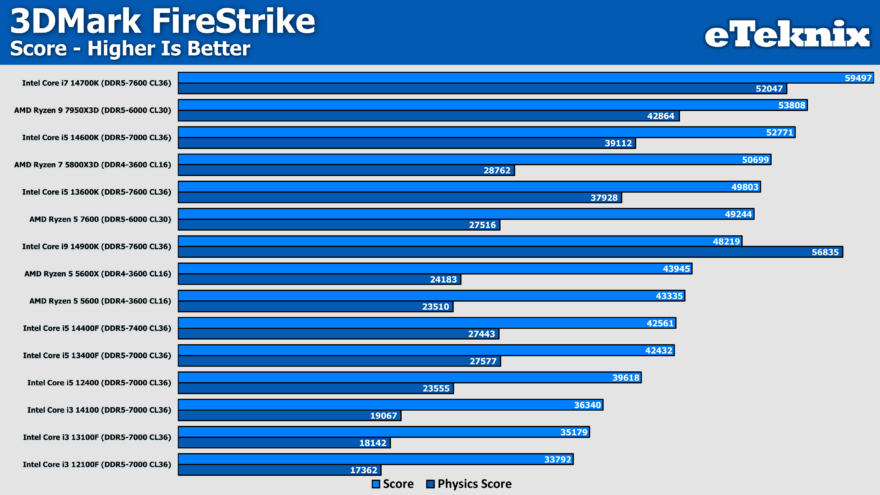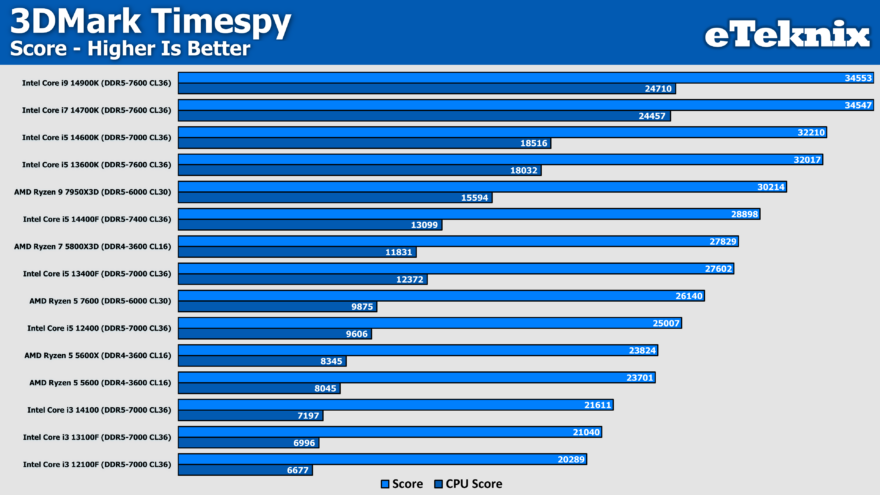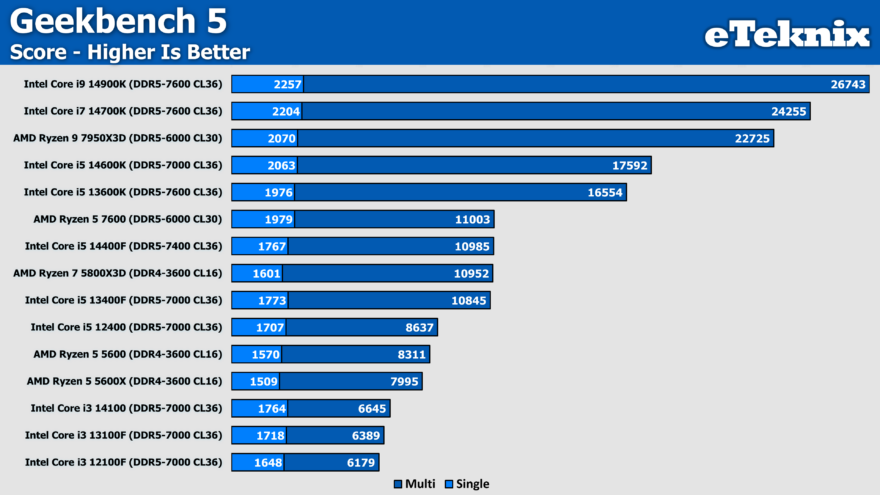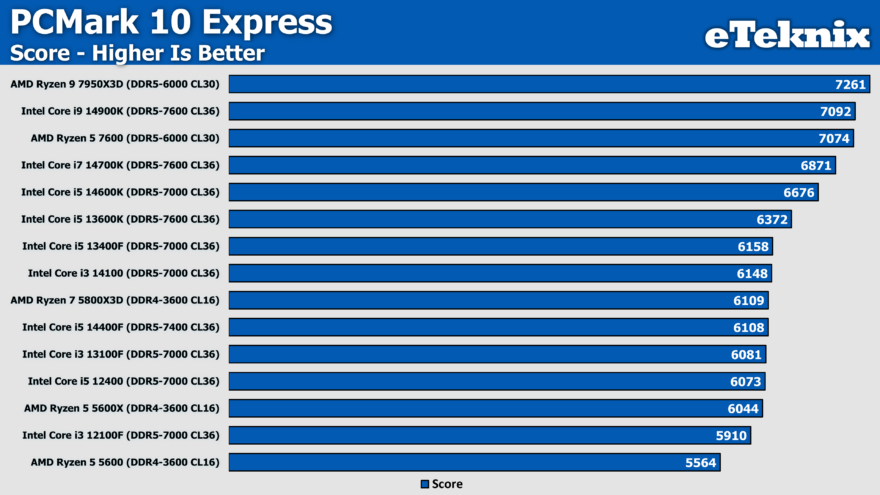Intel Core i3 14100F CPU Review

3DMark Firestrike
3DMark tests your system’s GPU and CPU performance by rendering extremely demanding game-like scenes in real time. The faster the benchmark runs, the better your score. Now your quest begins. What can you do to get a better score?
3DMark is available on Steam here.

In 3DMark Fire Strike the results are pretty much what you would expect, the 14100 has a small boost over the 13100F with 3% higher performance on the overall score and 5% more on the physics score. These improvements are very similar to those that we saw going from the 12100F to the 13100F, where the score improved by 4% and the physics score also went up by 4%. Even though we didn’t see the 14100 trade places with any CPUs in the standings it’s still nice to see these kinds of improvements going from one generation to another and being a refresh, it’s expected too.
3DMark Timespy
Time Spy is a DirectX 12 benchmark test for gaming PCs running Windows 10 and above only. With its pure DirectX 12 engine, built from the ground up to support the latest API features like asynchronous compute, explicit multi-adapter, and multi-threading, Time Spy is the ideal benchmark for testing the DirectX 12 performance of modern graphics cards and is typically a good benchmark for mid-to-high-end hardware. Furthermore, Timespy Extreme is designed for 4K performance testing.
3DMark is available on Steam here.

Sticking with 3DMark for now but moving over to the Timespy benchmark, and again we see small increases in performance over the 13100F with the 14100 performing just under 3% better in both the score and CPU score. This once again reflects the improvements we saw with the jump to the 13th gen, which saw the 13100F outperforming its predecessor by admittedly marginal differences.
Geekbench 5
Geekbench 5 is a cross-platform benchmark that measures your system’s performance with the press of a button. How will your mobile device or desktop computer perform when push comes to crunch? How will it compare to the newest devices on the market? Find out today with Geekbench 5.
Available now on Geekbench.

Moving on to Geekbench, where the 14100 falls right where we would expect it to, with a 2% increase in the single-threaded score and a 4% increase in the multi-threaded score, it’s still nothing major, but it does decrease the jump up to the 5600X in the multi-threaded score, it’s also worth noting that despite the 5600Xs higher multi-thread score, the single thread score actually falls below the 14100 by 14%, which shows how the Intel CPU still might be a better option for single thread applications.
PCMark 10
PCMark 10 features a comprehensive set of tests that cover the wide variety of tasks performed in the modern workplace. With a range of performance tests, custom run options, Battery Life Profile, and new Storage benchmarks, PCMark 10 is the complete PC benchmark for the modern office.
Available now on Steam.

Next up is PCMark. Here we see 14100 actually performing quite well compared to other CPUs, it manages to not only outperform the 12100F and the 13100F by 4% and 1% respectively, but it also manages to see a small improvement of 0.6% in the score over the 5800X3D. It’s worth pointing out that the 5800X3D is a CPU designed more for gaming and this benchmark is designed more for general use, but regardless, for the price difference it would make no sense to go for the X3D CPU if you only plan on using the PC for day to day applications or work, but I think we already knew that.








